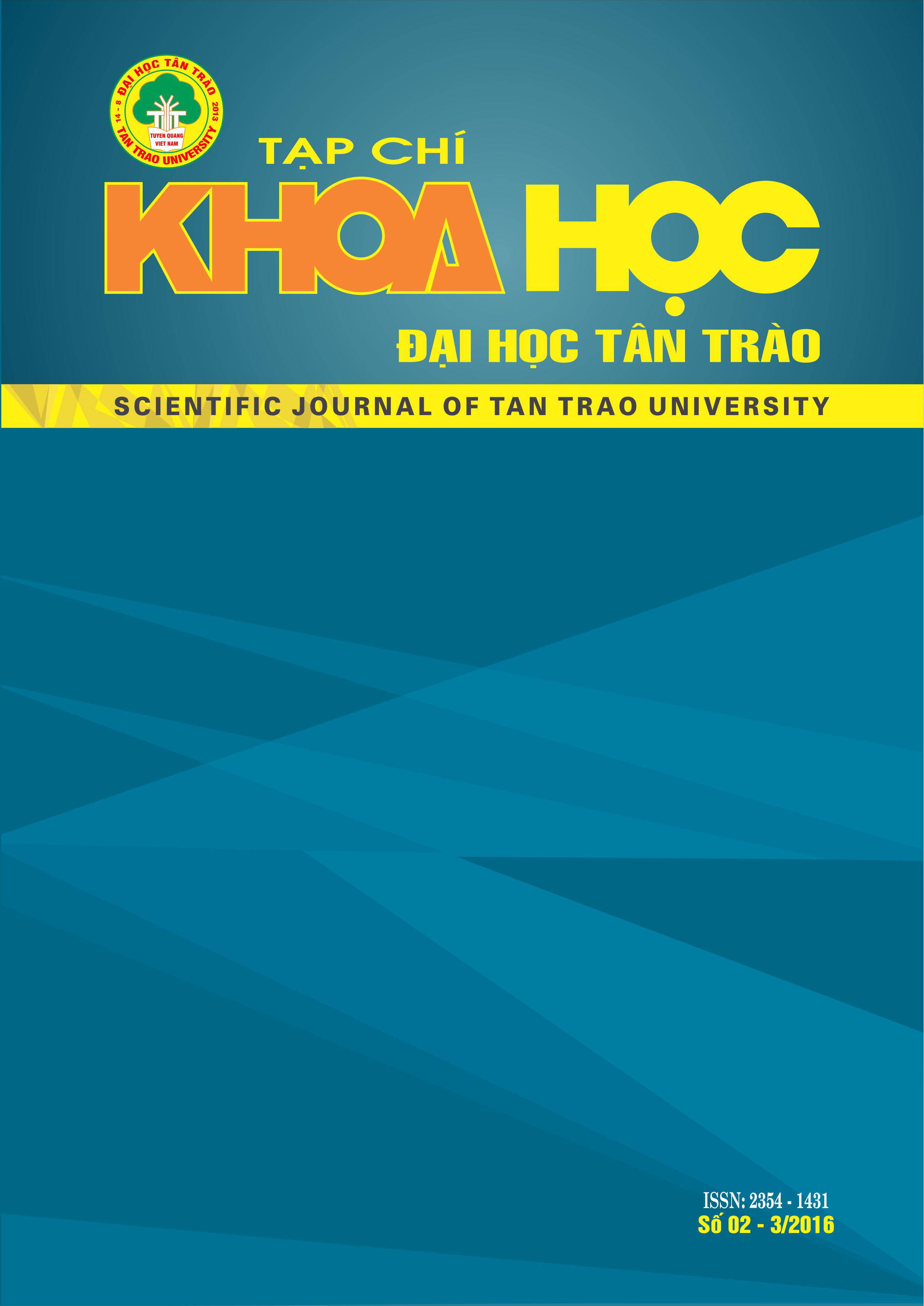CURRICULUM IN HIGHER EDUCATION – AN INTERNATIONAL PERSPECTIVE
DOI:
https://doi.org/10.51453/2354-1431/2016/81Keywords:
curriculum, global higher education, international issuesAbstract
Curriculum, broadly defined, is an underutilized construct in higher education. This paper discusses the nature of curriculum. Issues relating to purpose, structure, design, access, technology, choice, competition, communication and balance are briefly considered drawing on a range of international examples. A comprehensive consideration of curriculum offers a coherent way to
bring together the many issues related to the learning opportunities thathigher education institutions
offer their students.
Downloads
References
1. ABC Fact Check.Will Australian universities ‘slide into mediocrity’ without reform Retrieved September 25, 2014, from http://www.abc.net.au/news/2014-09-21/christopher-pyne universities-claim-far-fetched/5703522
2. Academic Rankings of World Universities. Retrieved October 6, 2014, from http://www.shanghairanking.com/ARWU2014.html
3. Bastedo, M.N. (2005). Curriculum in Higher Education – The Historical Roots of Contemporary Issues. In Altbach, P.G., Berdahl, R.O. and Gumport, P.J. (Eds.), American Higher Education in the Twenty-First Century (pp 462-485). Baltimore: The Johns Hopkins University Press.
4. Barnett, R..&Coate, K. (2005) Engaging the Curriculum in Higher Education. Maidenhead: SHRE/Open University Press.
5. Bobbitt, J.F. (1918) The Curriculum. Boston: Houghton Mifflin.
6. Curriculum. Retrieved 25 September, 2014, from http://en.wikipedia.org/wiki/Curriculum
7. Dictionary.comCurriculum. Retrieved 25 May, 2007, from Dictionary.com Unabridged (v1.1)
8. Dictionary.com Curriculum. Retrieved 29 September, 2014, from http://dictionary.reference.com/browse/curriculum?s=t
9. Dili Institute of Technology. Retrieved 9 October, 2014, from https://www.facebook.com/DIT.TL/info
10. EDUCAUSE. 7 things you should know about flipped classrooms. Retrieved 6 October, 2014, from https://net.educause.edu/ir/library/pdf/ELI7081.pdf
11. Hicks, O. (2007) Curriculum in higher education in Australia – Hello? Retrieved 28 September, 2014, from content/uploads/conference/2007/PDF/R/p227.pdf
12. Higher Education Academy, Imaginative Curriculum Project.Information and Background. Retrieved 23 March, 2007, from http://www.heacademy.ac.uk/853.htm
13. Higher Education Strategy Group (2011) National Strategy for Higher Education to 2030. Dublin: Department of Education and Skills.
14. La Trobe University, Curriculum White Paper Planning Group (2009). Design for Learning. Bundoora, Victoria: La Trobe University.
15. Lawson, R. (2014).Principles for Designing a Curriculum to Develop and Assure Student Learning Outcomes. Retrieved 6 October, 2014, from http://www.assuringlearning.com/resources/curriculum_design_resources/IICEpaper.pdf
16. Leask, B, and Carroll, J. (2011). Moving beyond ‘wishing and hoping’: internationalization and student experiences of inclusion and engagement. Higher Education Research & Development, 30(5), 647-659.
17. Lee, N. (2011) The Swinburne Professional Learning Model: undergraduate experience as preparation for graduate life. Retrieved 9 October, 2014, fromhttp://www.outduction.ac.uk/kingston-conference/10-00-keynote.pdf
18. Lovat, T.J. & Smith, D.L. (2003). Curriculum – Action on Reflection, 4th ed. Tuggerah: Social Science press.
19. Mooc-List. A complete list of Massive Open On-line Courses offered by the best universities and entities. Retrieved 6 January, 2016, from Mooc-list.com
20. Ranking Web of Universities. Retrieved November 15, 2013, from http://www.webometrics.info/en/node/54
21. The University of Melbourne (2006) The Melbourne Model: Report of the Curriculum Commission. Retrieved September 30, 2014, from http://growingesteem.unimelb.edu.au/_data/assets/pdf_file/0003/86673/cc_report_on_the_mel bourne_model.pdf
22. Times Higher Education World University Rankings. Retrieved 6 October, 2014, from http://www.timeshighereducation.co.uk/world-university-rankings/2014-15/world-ranking
23. Universities Worldwide. Retrieved November 15, 2013, from http://univ.cc/index.html
Downloads
Published
How to Cite
Issue
Section
License

This work is licensed under a Creative Commons Attribution-ShareAlike 4.0 International License.
All articles published in SJTTU are licensed under a Creative Commons Attribution-ShareAlike 4.0 International (CC BY-SA) license. This means anyone is free to copy, transform, or redistribute articles for any lawful purpose in any medium, provided they give appropriate attribution to the original author(s) and SJTTU, link to the license, indicate if changes were made, and redistribute any derivative work under the same license.
Copyright on articles is retained by the respective author(s), without restrictions. A non-exclusive license is granted to SJTTU to publish the article and identify itself as its original publisher, along with the commercial right to include the article in a hardcopy issue for sale to libraries and individuals.
Although the conditions of the CC BY-SA license don't apply to authors (as the copyright holder of your article, you have no restrictions on your rights), by submitting to SJTTU, authors recognize the rights of readers, and must grant any third party the right to use their article to the extent provided by the license.


